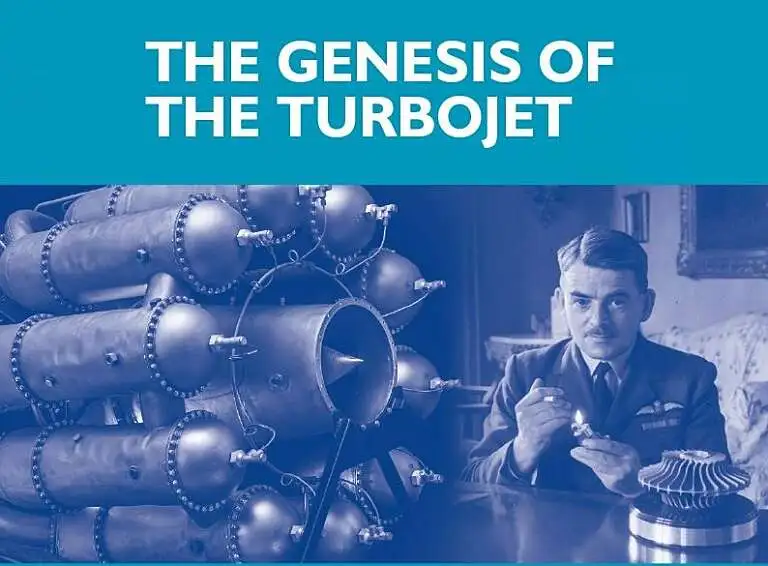
The Genesis of the Turbojet: Whittle to Power Jet Engines – Part 2
In January 1936, when the Power Jets company was created, Henry Tizard, the rector of Imperial College London and chairman of the Aeronautical Research Committee
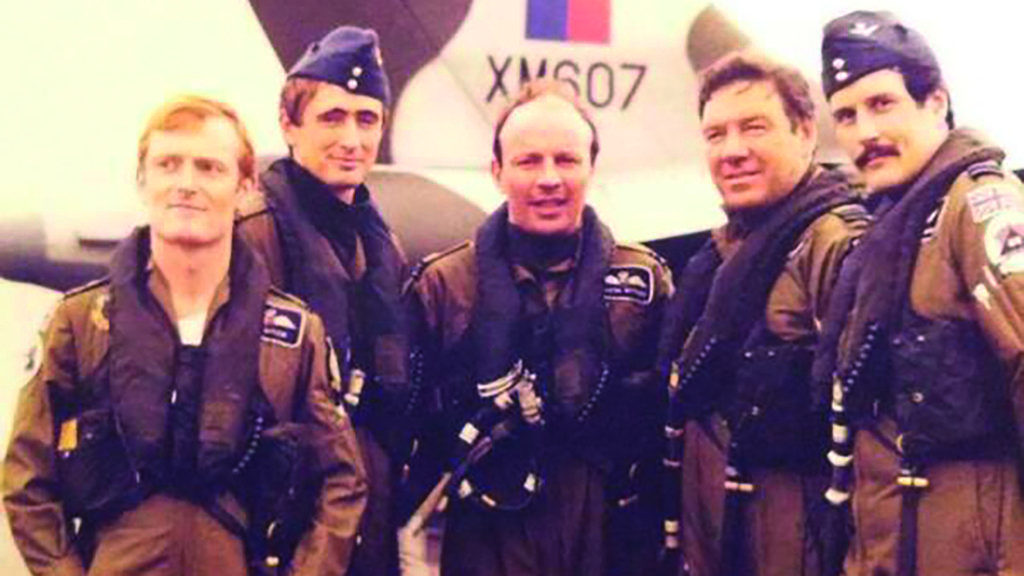
On 2 April 1982, Argentina invaded and occupied the Falkland Islands. It was the beginning of a ten-week conflict that ended with the Argentines surrendering on 14 June and the islands returning back to British control.
On a rare weekend sitting, the House of Commons met on Saturday 3 April 1982 to respond to the invasion. It had been nearly 30 years since the last Saturday sitting, which was on 3 November 1956 to discuss the Suez Crisis.
Britain had the backing of the United Nation Security Council, with America trying to broker a peace deal. Alexander Haig was the United States Secretary of State under President Ronald Reagan and served as an intermediary between Britain and Argentina in an effort to find a resolution to the conflict.
On 19 April, Alexander Haig returned to Washington from Buenos Aires after more than three days of very detailed talks. Haig was offered a plan for the withdrawal of Argentine troops from the Falklands Islands and joint Argentine-British administration. They also insisted that after six months of negotiations the Falkland Islands would have to come under full Argentine sovereignty.
Clearly this was an offer that Britain would not accept. The UK Foreign Secretary, Francis Pym, told Parliament on that day that “we are stepping up the military, economic and diplomatic pressure on Argentina.”
This CBC news report in 1982 shows a young Joe Biden (America’s current President) being interviewed after attending a briefing from Secretary of State Alexander Hague.
The retaking of the Falkland Islands was considered extremely difficult. According to historian Arthur L. Herman, the chances of Britain succeeding were assessed by the US Navy as “a military impossibility”. However, Britain had been making preparations in the event of war. Following the invasion on 2 April, a British task force began to assemble.
The entire task force eventually comprised of a number of nuclear submarines and 127 ships, including Royal Navy aircraft carriers, Royal Fleet Auxiliary ships and Merchant Navy ships. These vessels also carried some of the Armed Forces to Ascension Island – Royal Marines, British Army and Royal Navy.
The RAF provided Harriers and flew Lockheed C-130 Hercules transports to Ascension, carrying stores and RAF and Royal Navy personnel to set up a base. The RAF had also been researching the possibility of carrying out a long-range bombing campaign with Vulcans using aerial refuelling.
In June 1961, Vulcan XH481 of 617 Squadron departed from RAF Scampton Lincolnshire and flew non-stop to RAAF Richmond near Sydney in Australia. It was the first ever non-stop flight from the UK to Australia.
The distance of 11,500 miles was much a greater distance than the Falklands mission. The Vulcan required three air to air refuelling (AARs), which demonstrated the increased strike range of the Vulcan with AAR. It was this factor that made the Vulcan a consideration for the Falklands mission. However, the Australia flight was with the support of pre-positioned aerial tankers along the route which would not be possible from Ascension.
The aging Vulcan fleet had been planned to exit RAF service at the end of 1982. The Argentines had declared interest in acquiring between 6-12 Vulcan aircraft, just a few months before they invaded the Falkland Islands.
On 29 January 1982, the UK Embassy in Buenos Aires sent this telegram to the Foreign and Commonwealth Office.
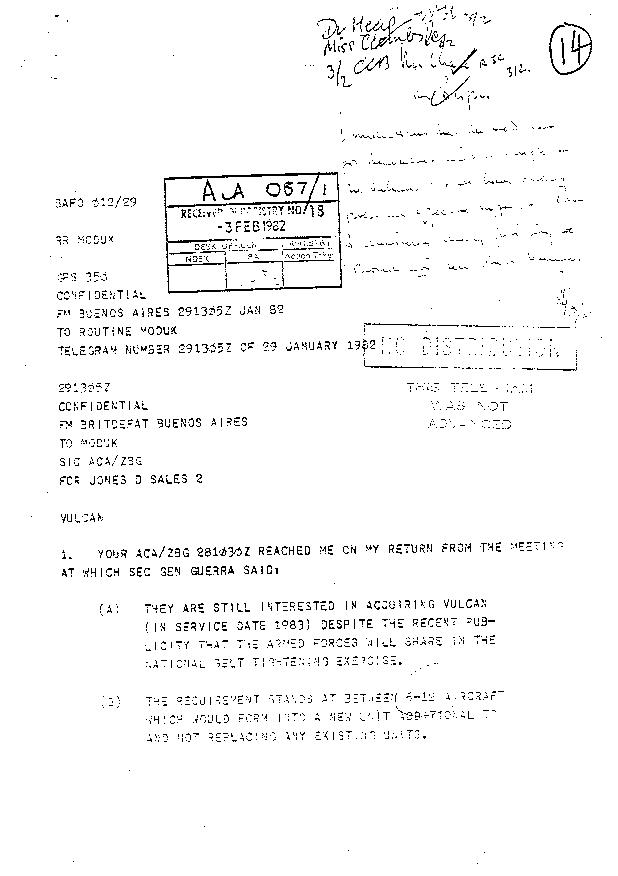
The response, sent on the 2 February, was that Vulcans could be used to threaten Falklands so “we are bound to oppose the sale”.
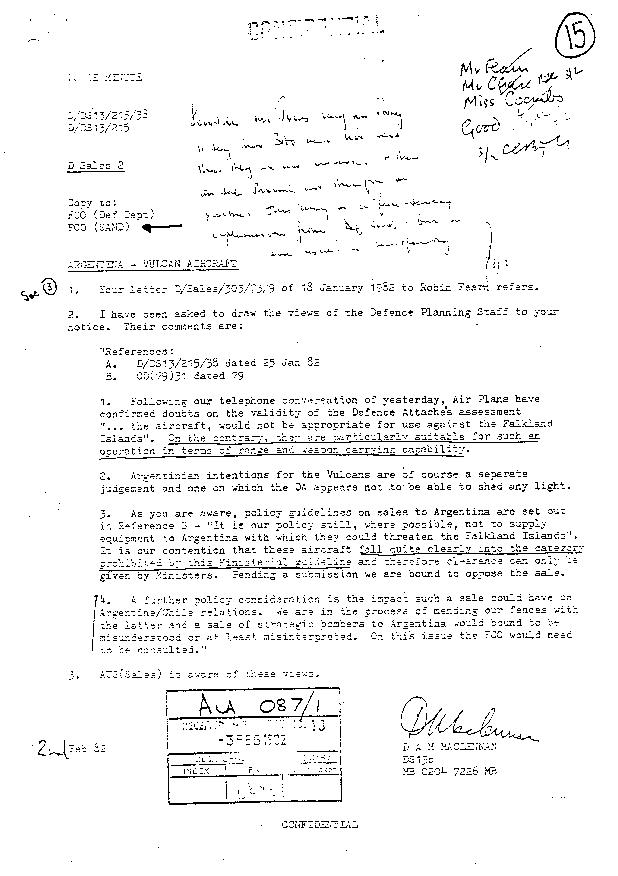
Just two months later the British territory was invaded by Argentina and the Vulcan was now a consideration in the action to recapture the islands.
Air Chief Marshall Michael Beetham had initially proposed an attack in which a single Vulcan Bomber would carry a light bomb-load to keep the AAR requirements to a minimum. The attack was planned to be on Port Stanley Airfield as it was the one useful concrete runway on the Falkland Islands, and was being used by the Argentines as one of their main links back to the mainland.
James Moffat, a mathematician at the MOD, was tasked by Beetham to analyse the proposal for the Port Stanley attack. He had gathered information, such as height of the aircraft over the target and the composition of the runway surface from the UK construction firm that had constructed the Port Stanley airfield, to be able to calculate the size of a crater made by a 1,000lb bomb.
With this data he was able to calculate the optimal bomb load, taking into account the heavier the aircraft, the higher the fuel usage and more AARs would be required, or a lack of fuel would mean the aircraft possibly being ditched in the South Atlantic.
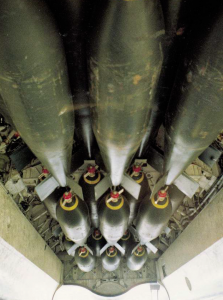
He calculated that a light load of seven 1,000lb bombs would not be enough. His analysis confirmed that a full load of twenty-one 1,000lb bombs would have a 90 per cent probability of putting one crater in the runway and there would be a 75 per cent chance of two craters. An attack was also expected to do damage to the dispersal areas and aircraft parked nearby.
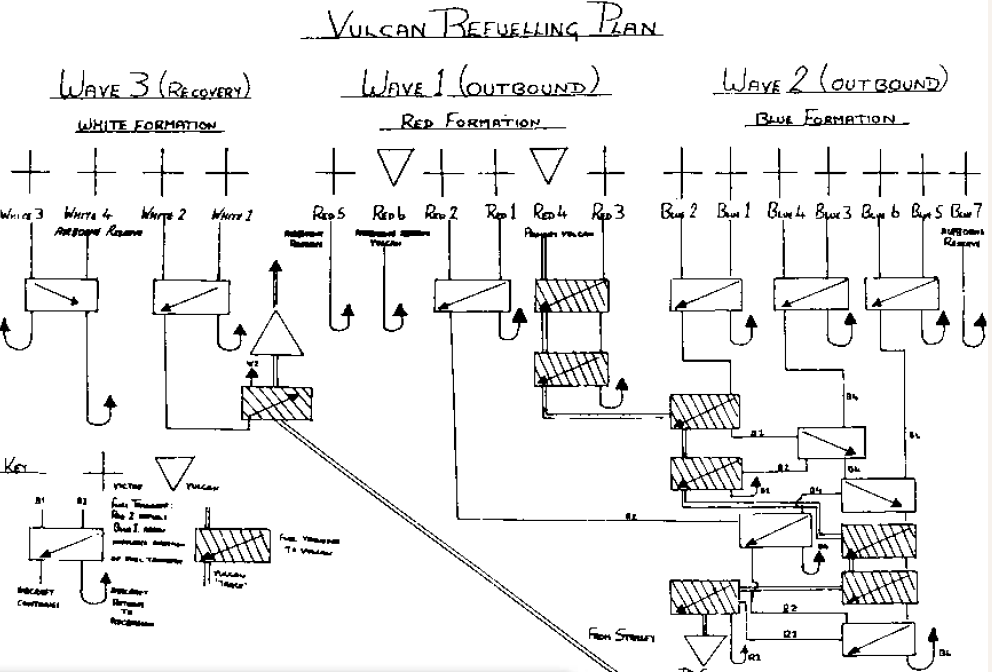
The larger payload of 9.5 metric tonnes, which would need to be carried across 3,900 miles of ocean, meant the refuelling aircraft would need to refuel other refuellers to get them into the right position to refuel the Vulcan.
The detail was briefed to the War Cabinet, chaired by Prime Minister Margaret Thatcher, and it was decided that twenty-one bombs would have to be used in what was to be an extraordinary, record-breaking mission.
The work to prepare the five Vulcans chosen for a possible mission had begun on Friday 9 April. One of the most challenging tasks was reinstating the aerial refuelling system as it had been blocked off. Refuelling hadn’t been done for a number of years with a Vulcan, and while the Vulcans were capable of carrying conventional bombs this also had not been done for a long time. Modifications were also required to the bomb-bay and installation of a new navigational system was needed, as well as the updating of several onboard electronics.
Kevin ‘Taff’ Stone, XH558’s Chief Engineer, worked on Vulcans during this period. He recalls the time as being “very intense, we were working 24-hour shifts”. He went on to say “we were fitting systems from other aircraft over the weekend. We fitted navigational equipment from the VC10 aircraft, electronic counter measures from the Buccaneers, anti-radar missiles from Buccaneers”.
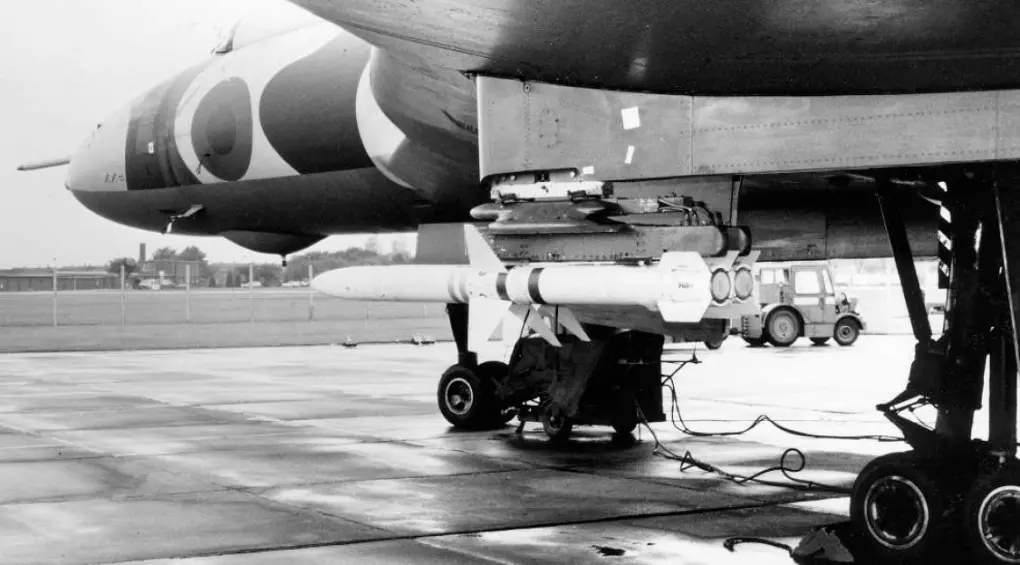
None of the Vulcans chosen for the mission were fitted with the bomb racks. Finding all the components for the number of racks required proved difficult. Thankfully, someone remembered that some had been sold to a scrapyard in Newark-on-Trent, and they were retrieved. A vital part needed for refuelling was famously found being used as an ashtray in a crew room.
Training for the Vulcan crews began on 14 April. A Victor tanker Air to Air Refuelling Instructor was added to each crew as refuelling had not practiced in a Vulcan for several years. The crews also trained on ultra-low-level flying, 1,000lb bombing, and Electronic Warfare training at RAF Spadeadam. All the while no-one knew what their mission would be.
On Friday 23 April MOD Chiefs of Staff Committee met to discuss the use of the Vulcan aircraft for attacks on Port Stanley Airfield. The document containing the minutes of the meeting was declassified in 2012, 30 years after the conflict.
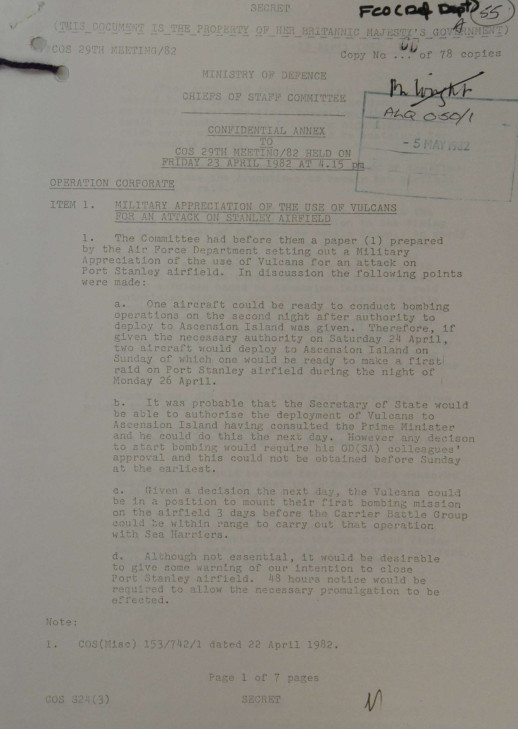
Britain’s plan was to fly Vulcans from Wideawake airfield, on Ascension Island, to the Falkland Islands for the missions. Wideawake was technically a United States Air Force base. The US Department of State was consulted and affirmed that it had no objection.
On 27 April, Margaret Thatcher’s War Cabinet gave the authority to proceed with the operation, codenamed Black Buck. Only two weeks after training began, the crews were told that they would be flying to Ascension Island to prepare for a bombing raid on Port Stanley airfield on the night of 30 April.
The first two Vulcans, commanded by Squadron Leader John Reeve, and Flight Lieutenant Martin Withers, left Waddington at 0900 on 29 April and arrived at Wideawake at 1800. It was a non-stop nine-hour flight during which they were refuelled twice by Victor tankers.

In January 1936, when the Power Jets company was created, Henry Tizard, the rector of Imperial College London and chairman of the Aeronautical Research Committee
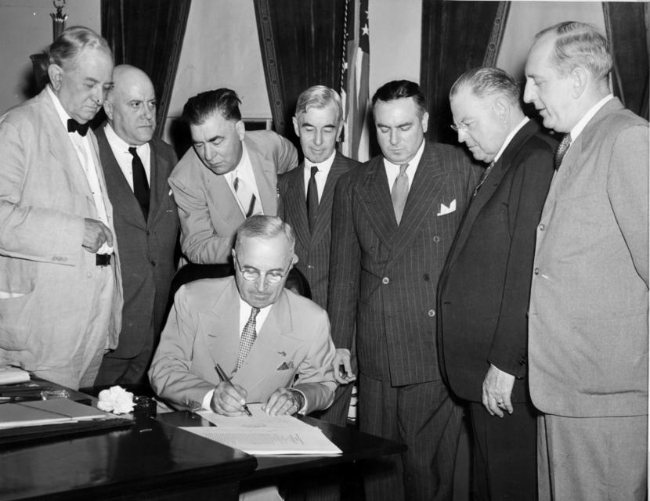
Two weeks before the first nuclear weapon was used for warfare, dropped on the Japanese city of Hiroshima, the results of the UK general election
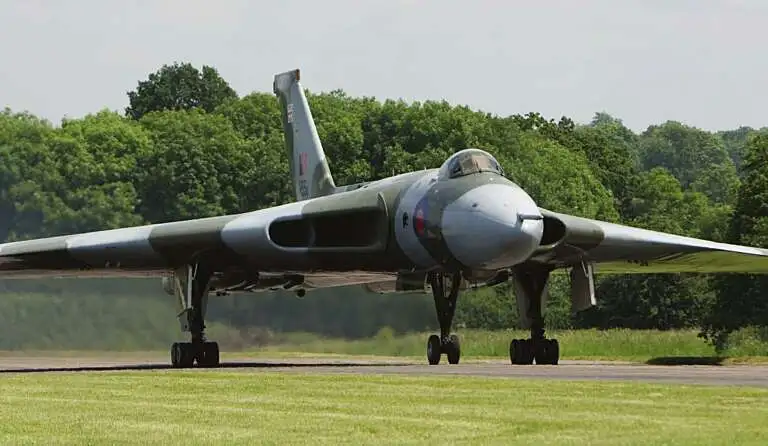
The race was on again to prepare XH558 for the 2009 airshow season. A host of servicing requirements awaited the attentions of the Trust’s engineering

They say it takes a village to raise a child, well it certainly takes an army of supporters and volunteers to look after a heritage